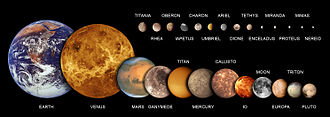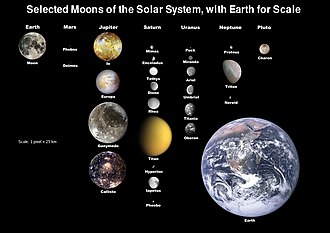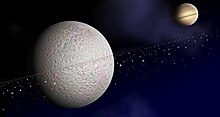Pareto principle applied to community fundraising
The Pareto principle (also known as the 80/20 rule, the law of the vital few, or the principle of factor sparsity) states that, for many events, roughly 80% of the effects come from 20% of the causes. Management consultant Joseph M. Juran suggested the principle and named it after Italian economist Vilfredo Pareto, who noted the 80/20 connection while at the University of Lausanne in 1896, as published in his first work: Cours d'économie politique; in it, Pareto showed that approximately 80% of the land in Italy was owned by 20% of the population.
It is an axiom of business management that "80% of sales come from 20% of clients".
Mathematically, the 80/20 rule is roughly followed by a power law distribution (also known as a Pareto distribution) for a particular set of parameters, and many natural phenomena have been shown empirically to exhibit such a distribution.
The Pareto principle is only tangentially related to Pareto efficiency. Pareto developed both concepts in the context of the distribution of income and wealth among the population.
In economics
The
original observation was in connection with population and wealth.
Pareto noticed that approximately 80% of Italy's land was owned by 20%
of the population. He then carried out surveys on a variety of other countries and found to his surprise that a similar distribution applied.
A chart that gave the inequality a very visible and comprehensible form, the so-called "champagne glass" effect, was contained in the 1992 United Nations Development Program
Report, which showed that distribution of global income is very uneven,
with the richest 20% of the world's population controlling 82.7% of the
world's income. Still, the Gini index of the world shows that nations have wealth distributions that vary greatly.
| Quintile of population | Income |
|---|---|
| Richest 20% | 82.70% |
| Second 20% | 11.75% |
| Third 20% | 2.30% |
| Fourth 20% | 1.85% |
| Poorest 20% | 1.40% |
The Pareto principle also could be seen as applying to taxation. In
the US, the top 20% of earners have paid roughly 80-90% of Federal
income taxes in 2000 and 2006, and again in 2018.
However, it is important to note that while there have been associations of such with meritocracy,
the principle should not be confused with further reaching
implications. As Alessandro Pluchino at the University of Catania in
Italy points out, other attributes do not necessarily correlate. Using
talent as an example, he and other researchers state, “The maximum
success never coincides with the maximum talent, and vice-versa,” and
that such factors are the result of chance.
In computing
In computer science the Pareto principle can be applied to optimization efforts. For example, Microsoft
noted that by fixing the top 20% of the most-reported bugs, 80% of the
related errors and crashes in a given system would be eliminated. Lowell Arthur expressed that "20 percent of the code has 80 percent of the errors. Find them, fix them!"
It was also discovered that in general the 80% of a certain piece of
software can be written in 20% of the total allocated time. Conversely,
the hardest 20% of the code takes 80% of the time. This factor is
usually a part of COCOMO estimating for software coding.
In sports
It
has been inferred the Pareto principle applies to athletic training,
where roughly 20% of the exercises and habits have 80% of the impact and
the trainee should not focus so much on a varied training.
This does not necessarily mean that having a healthy diet or going to
the gym are not important, but they are not as significant as the key
activities. It is also important to note this 80/20 rule has yet to be
scientifically tested in controlled studies of athletic training.
In baseball, the Pareto principle has been perceived in Wins Above Replacement
(an attempt to combine multiple statistics to determine a player's
overall importance to a team). "15% of all the players last year
produced 85% of the total wins with the other 85% of the players
creating 15% of the wins. The Pareto principle holds up pretty soundly
when it is applied to baseball."
Occupational health and safety
Occupational health and safety
professionals use the Pareto principle to underline the importance of
hazard prioritization. Assuming 20% of the hazards account for 80% of
the injuries, and by categorizing hazards, safety professionals can
target those 20% of the hazards that cause 80% of the injuries or
accidents. Alternatively, if hazards are addressed in random order, a
safety professional is more likely to fix one of the 80% of hazards that
account only for some fraction of the remaining 20% of injuries.
Aside from ensuring efficient accident prevention practices, the
Pareto principle also ensures hazards are addressed in an economical
order, because the technique ensures the utilized resources are best
used to prevent the most accidents.
Other applications
In
engineering control theory, such as for electromechanical energy
converters, the 80/20 principle applies to optimization efforts.
The law of the few can be also seen in betting, where it is said
that with 20% effort you can match the accuracy of 80% of the bettors.
In the systems science discipline, Joshua M. Epstein and Robert Axtell created an agent-based simulation model called Sugarscape, from a decentralized modeling
approach, based on individual behavior rules defined for each agent in
the economy. Wealth distribution and Pareto's 80/20 principle became
emergent in their results, which suggests the principle is a collective
consequence of these individual rules.
The Pareto principle has many applications in quality control. It is the basis for the Pareto chart, one of the key tools used in total quality control and Six Sigma techniques. The Pareto principle serves as a baseline for ABC-analysis and XYZ-analysis, widely used in logistics and procurement for the purpose of optimizing stock of goods, as well as costs of keeping and replenishing that stock.
In health care in the United States, in one instance 20% of patients have been found to use 80% of health care resources.
Some cases of super-spreading conform to the 20/80 rule,
where approximately 20% of infected individuals are responsible for 80%
of transmissions, although super-spreading can still be said to occur
when super-spreaders account for a higher or lower percentage of
transmissions. In epidemics with super-spreading, the majority of individuals infect relatively few secondary contacts.
The Dunedin Study has found 80% of crimes are committed by 20% of criminals. This statistic has been used to support both stop-and-frisk policies and broken windows
policing, as catching those criminals committing minor crimes will
supposedly net many criminals wanted for (or who would normally commit)
larger ones.
Many video rental shops reported in 1988 that 80% of revenue came from 20% of videotapes. A video-chain executive discussed the "Gone with the Wind syndrome", however, in which every store had to offer classics like Gone with the Wind, Casablanca, or The African Queen to appear to have a large inventory, even if customers very rarely rented them.
Mathematical notes
The
idea has a rule of thumb application in many places, but it is commonly
misused. For example, it is a misuse to state a solution to a problem
"fits the 80/20 rule" just because it fits 80% of the cases; it must
also be that the solution requires only 20% of the resources that would
be needed to solve all cases. Additionally, it is a misuse of the 80/20
rule to interpret a small number of categories or observations.
This is a special case of the wider phenomenon of Pareto distributions. If the Pareto index α, which is one of the parameters characterizing a Pareto distribution, is chosen as α = log45 ≈ 1.16, then one has 80% of effects coming from 20% of causes.
It follows that one also has 80% of that top 80% of effects
coming from 20% of that top 20% of causes, and so on. Eighty percent of
80% is 64%; 20% of 20% is 4%, so this implies a "64/4" law; and
similarly implies a "51.2/0.8" law. Similarly for the bottom 80% of
causes and bottom 20% of effects, the bottom 80% of the bottom 80% only
cause 20% of the remaining 20%. This is broadly in line with the world
population/wealth table above, where the bottom 60% of the people own
5.5% of the wealth, approximating to a 64/4 connection.
The 64/4 correlation also implies a 32% 'fair' area between the
4% and 64%, where the lower 80% of the top 20% (16%) and upper 20% of
the bottom 80% (also 16%) relates to the corresponding lower top and
upper bottom of effects (32%). This is also broadly in line with the
world population table above, where the second 20% control 12% of the
wealth, and the bottom of the top 20% (presumably) control 16% of the
wealth.
The term 80/20 is only a shorthand for the general principle at
work. In individual cases, the distribution could just as well be, say,
nearer to 90/10 or 70/30. There is no need for the two numbers to add
up to the number 100, as they are measures of different things, (e.g.,
'number of customers' vs 'amount spent'). However, each case in which
they do not add up to 100%, is equivalent to one in which they do. For
example, as noted above, the "64/4 law" (in which the two numbers do not
add up to 100%) is equivalent to the "80/20 law" (in which they do add
up to 100%). Thus, specifying two percentages independently does not
lead to a broader class of distributions than what one gets by
specifying the larger one and letting the smaller one be its complement
relative to 100%. Thus, there is only one degree of freedom in the
choice of that parameter.
Adding up to 100 leads to a nice symmetry. For example, if 80% of
effects come from the top 20% of sources, then the remaining 20% of
effects come from the lower 80% of sources. This is called the "joint
ratio", and can be used to measure the degree of imbalance: a joint
ratio of 96:4 is very imbalanced, 80:20 is significantly imbalanced (Gini index: 76%), 70:30 is moderately imbalanced (Gini index: 28%), and 55:45 is just slightly imbalanced (Gini index 14%).
The Pareto principle is an illustration of a "power law" relationship, which also occurs in phenomena such as brush fires and earthquakes.
Because it is self-similar over a wide range of magnitudes, it produces outcomes completely different from Normal or Gaussian distribution
phenomena. This fact explains the frequent breakdowns of sophisticated
financial instruments, which are modeled on the assumption that a
Gaussian relationship is appropriate to something like stock price
movements.
Equality measures
Gini coefficient and Hoover index
Using the "A : B" notation (for example, 0.8:0.2) and with A + B = 1, inequality measures like the Gini index (G) and the Hoover index (H) can be computed. In this case both are the same.













![{\displaystyle [{\text{Fe}}/{\text{H}}]=\log _{10}{\left({\frac {N_{\text{Fe}}}{N_{\text{H}}}}\right)_{\text{star}}}-\log _{10}{\left({\frac {N_{\text{Fe}}}{N_{\text{H}}}}\right)_{\text{sun}}},}](https://wikimedia.org/api/rest_v1/media/math/render/svg/41bd2fa4004fa3ecc9081f8ee204da018b9c4474)


![{\displaystyle R_{23}={\frac {[{\text{O II}}]_{3727~\mathrm {\AA} }+[{\text{O III}}]_{4959~\mathrm {\AA} +5007~\mathrm {\AA} }}{{\text{H}}_{\beta }}},}](https://wikimedia.org/api/rest_v1/media/math/render/svg/382a2b4bcb84669d0134a5e586f5db12b701d2cc)

![{\displaystyle S_{23}={\frac {[{\text{S II}}]_{6716~\mathrm {\AA} +6731~\mathrm {\AA} }+[{\text{S III}}]_{9069~\mathrm {\AA} +9532~\mathrm {\AA} }}{{\text{H}}_{\beta }}}.}](https://wikimedia.org/api/rest_v1/media/math/render/svg/28d1263d77e71ad861598be690c740f6350b9dff)








